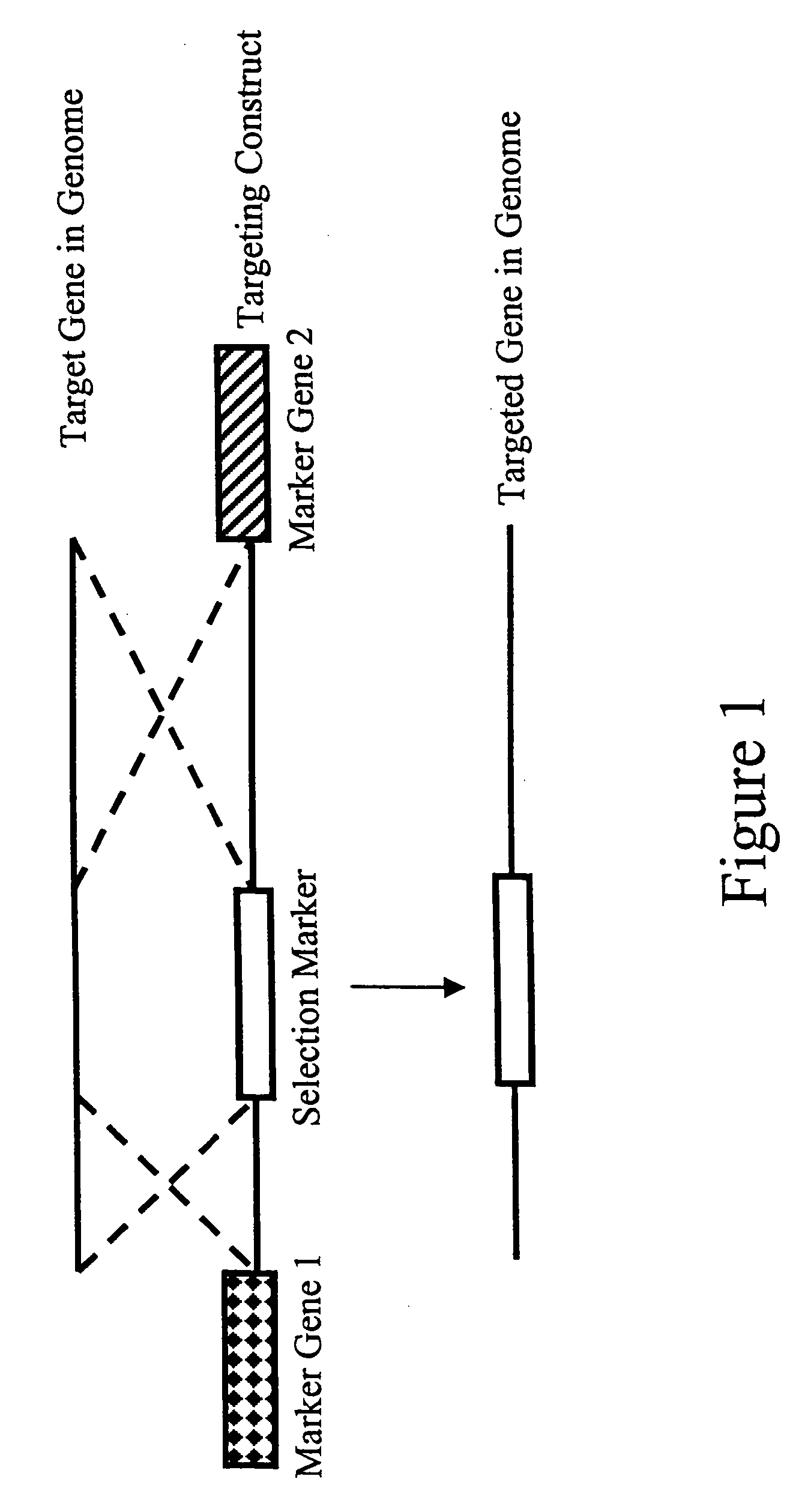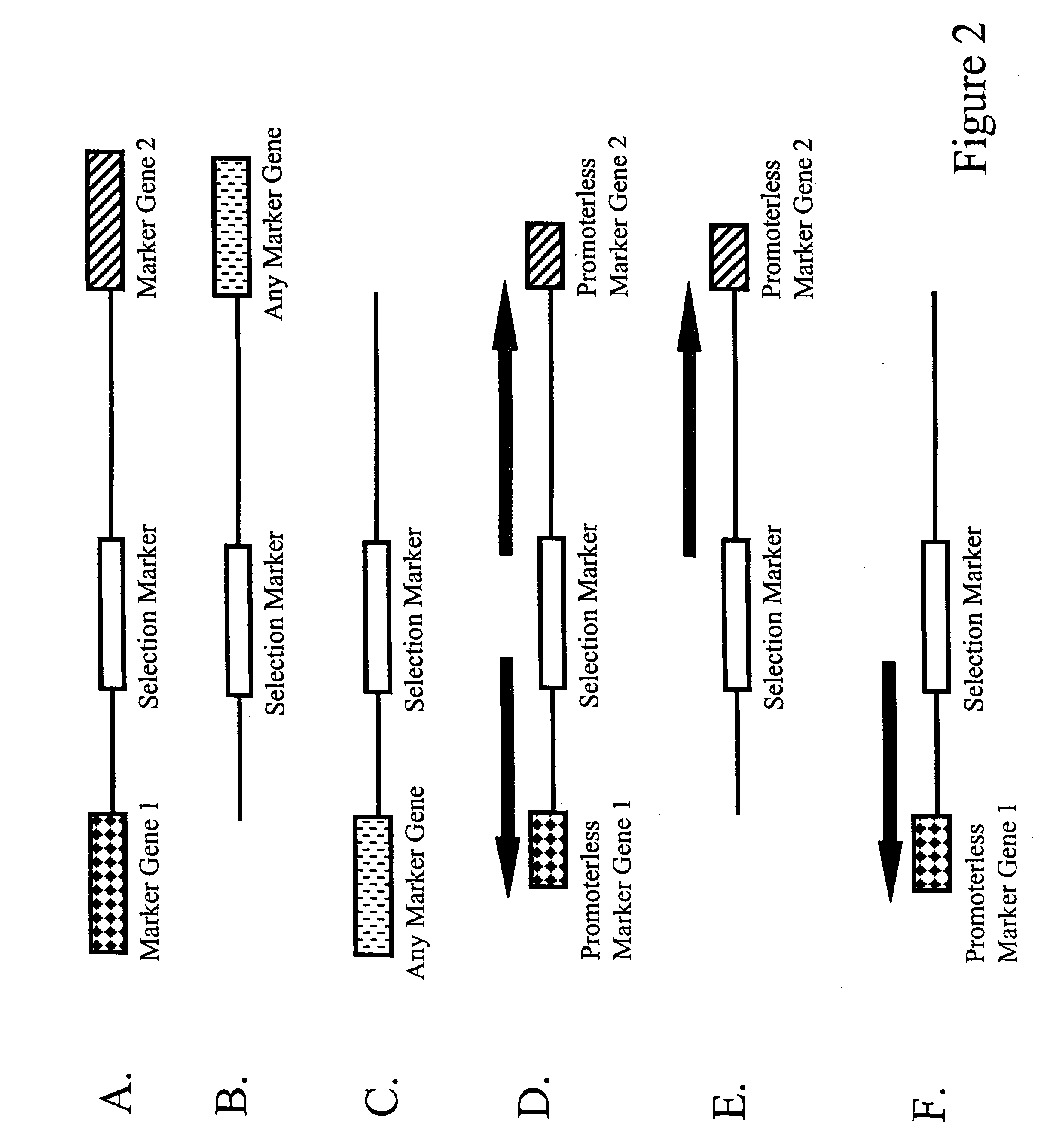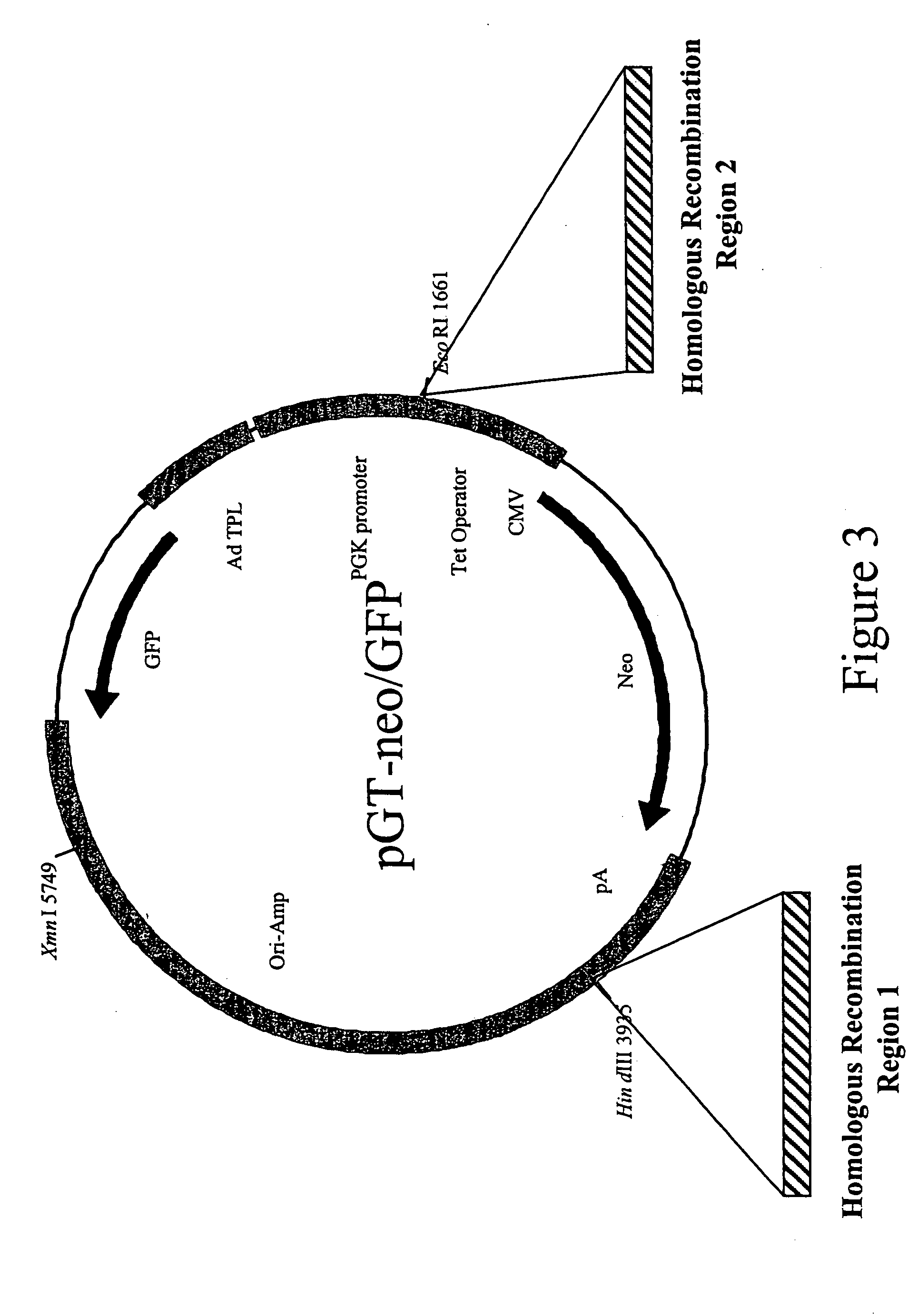Methods and combinations for gene targeting by homologous recombination
a technology of homologous recombination and composition, applied in the field of methods and compositions for gene targeting by homologous recombination, can solve the problems of time-consuming, not always available selection for all types of cells, and understanding the biological function of mammalian genes, and achieve the effect of facilitating expression of positive selection markers
- Summary
- Abstract
- Description
- Claims
- Application Information
AI Technical Summary
Problems solved by technology
Method used
Image
Examples
Embodiment Construction
[0027] The invention provides methods and compositions for inserting a DNA sequence in the genome of cells of a cell type by homologous recombination. The method of the invention utilizes a gene targeting vector comprising a sequence region that encodes a fluorescence protein, such as but not limited to a green fluorescence protein, located outside the homologous sequence regions, for selection against random, non-homologous insertions.
[0028] The method of the invention can be used to target any genomic sequences in any cells, including but not limited to, any plant or animal cells, e.g., mammalian cells. Any cell type can be used in the present invention, including but not limited to, somatic cells and stem cells.
5.1. Gene Targeting Vectors
[0029] The invention provides gene targeting vectors comprising sequences encoding a positive selection marker for selection for integration of all or portion of the gene targeting vector in the genome of the target cells and at least one fluo...
PUM
| Property | Measurement | Unit |
|---|---|---|
| fluorescence | aaaaa | aaaaa |
| drug resistance | aaaaa | aaaaa |
| resistance | aaaaa | aaaaa |
Abstract
Description
Claims
Application Information
 Login to View More
Login to View More - R&D
- Intellectual Property
- Life Sciences
- Materials
- Tech Scout
- Unparalleled Data Quality
- Higher Quality Content
- 60% Fewer Hallucinations
Browse by: Latest US Patents, China's latest patents, Technical Efficacy Thesaurus, Application Domain, Technology Topic, Popular Technical Reports.
© 2025 PatSnap. All rights reserved.Legal|Privacy policy|Modern Slavery Act Transparency Statement|Sitemap|About US| Contact US: help@patsnap.com



